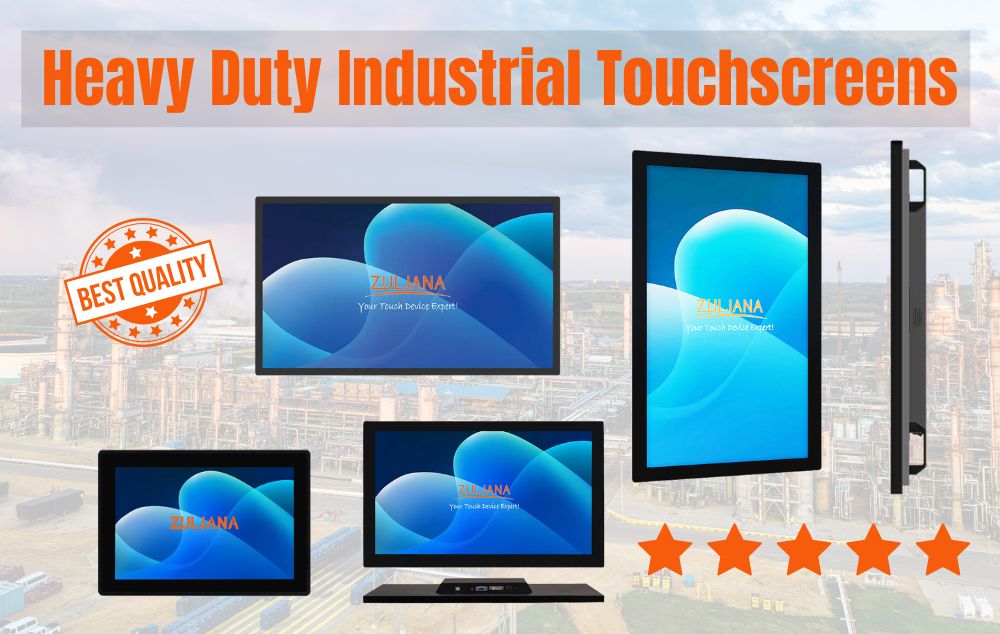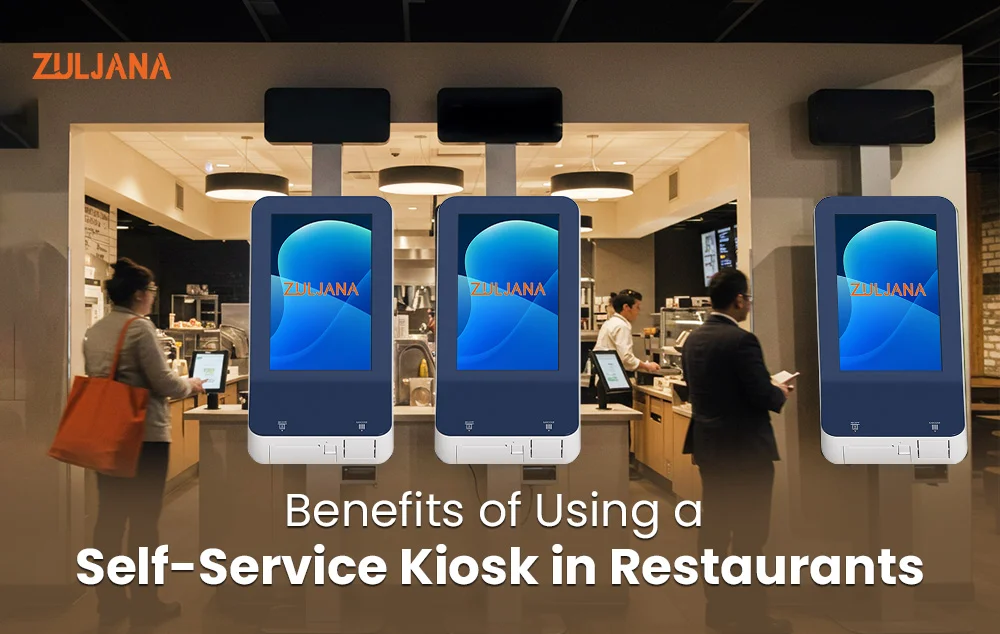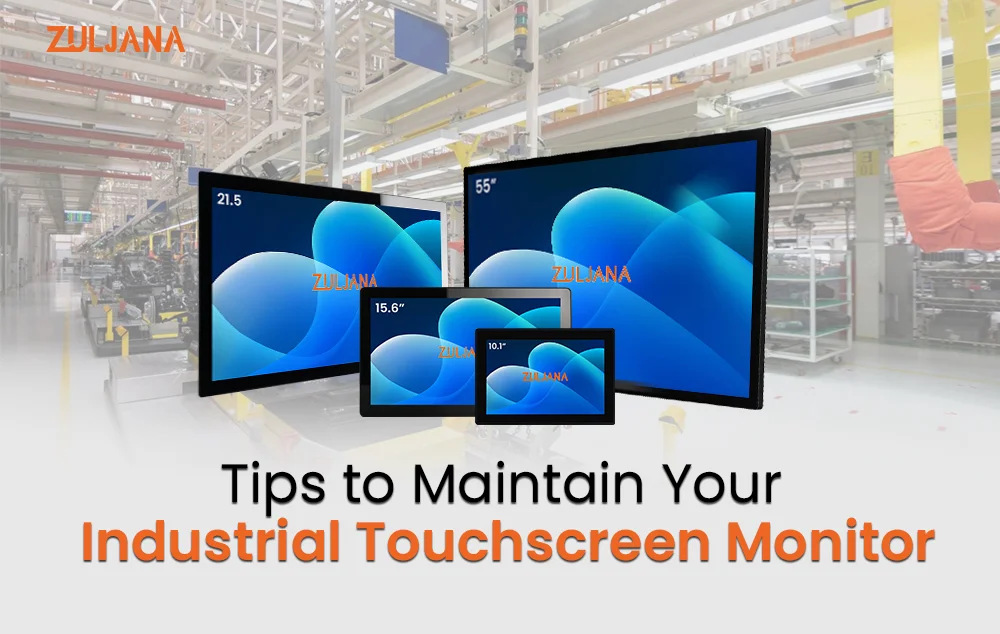Modern workplaces are becoming increasingly digital, and industrial touchscreen monitors provide an easy and efficient way to interact with machines and controls. But keep in mind not every monitor is capable of doing this job. So, the question is how to choose the best industrial touchscreen monitors.
When it comes to picking the right industrial touchscreen monitor, we should keep some important things in mind. You are choosing a screen you will use daily for different jobs. You want to ensure it works well, looks good, and lasts long.
If you want to know more about our Industrial Touchscreen Monitors
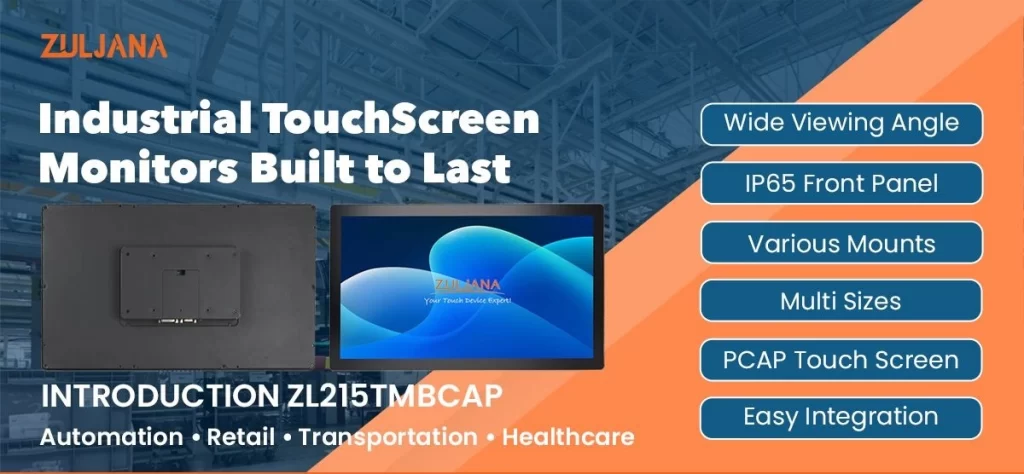
Things to consider when choosing an industrial Touch screen Monitor in Europe
1. Display Size and Resolution
A touchscreen monitor’s screen size and picture clarity are two important factors to take into consideration when choosing one.
Touchscreen monitor Screen Size
When choosing the right industrial touchscreen monitors, screen size is the most important thing to keep in mind. If you have a big screen, you can see more information or pictures all at once without having to scroll up and down too much.
This makes it much easier to work on big projects, to check every detail, or to watch videos because everything is bigger and easier to see. ZULJANA produces the best POS system for small businesses.
Resolution of Monitor
- A high-resolution screen makes everything look clearer and brighter, making it easier to see small details and read text. This is very important in industrial settings, where accuracy and efficiency are essential.
- A resolution of at least 1024×768 pixels is usually enough to make text and images look sharp on smaller screens. But for larger screens, you might want a higher resolution, like 1920×1080 pixels (Full HD) or even 4K (3840×2160 pixels), to keep everything clear and prevent blurriness on bigger displays.
- Picking the right resolution ensures that your monitor looks its best and works well for all your tasks.
2. Touchscreen Technology
There are four main types of touchscreen technology: resistive, capacitive, PCAP, and infrared. Each type has its own special features.
- Resistive Touchscreens: These screens are like a pair of gloves for your monitor. They work by pressing on the screen with any object, like a stylus or even your finger (even in gloves).
- Capacitive Touchscreens: Capacitive touchscreens are super responsive and clear. They use the electrical properties of your skin to register touch, so they work best with your finger. They are smooth and easy to use, making them perfect for tasks that need quick and precise touch input. You can also read the applications of industrial touchscreen monitors.
- Infrared Touchscreens: These screens use beams of infrared light around the edges of the screen. When you touch the screen, you break the beams, and the screen knows where you touched. We have also listed info about the best POS system for grocery stores.
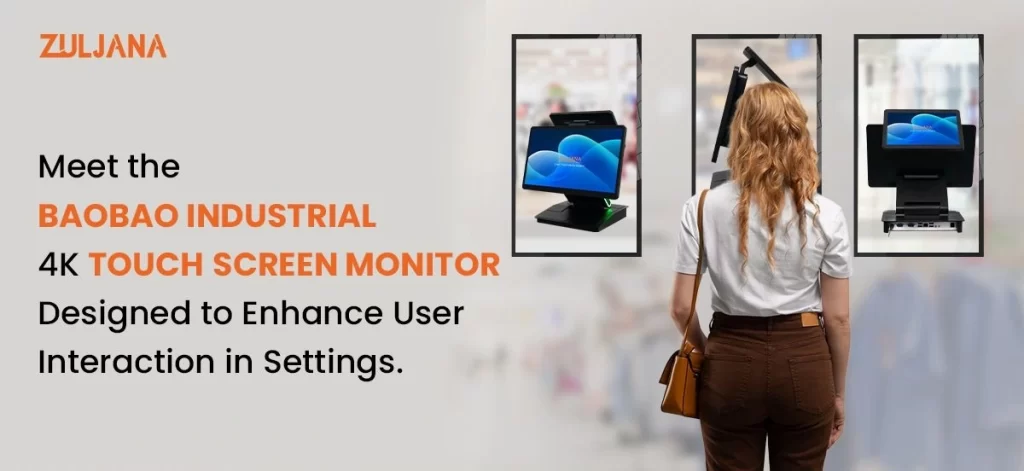
3. Durability and Build Quality of Industrial Touchscreen Monitor
When choosing an industrial touchscreen monitor, it’s essential to think about both the monitor’s body durability and screen durability. Let’s break these down:
Durability and Build Quality Body
Monitor parts must be strong and built to last. Here are some materials used for the monitor body:
- Plastic: Plastic is lightweight and can be cost-effective, but it might not be as strong or durable in tough environments.
- Stainless Steel: Stainless steel is very tough and resistant to erosion. It’s ideal for harsh environments where the monitor might face exposure to chemicals, moisture, or rough handling.
Screen Durability and Build Quality
The screen itself needs to be durable to handle everyday use and any potential accidents. Here’s how screen durability is improved:
- Reinforced Glass: Many industrial monitors use reinforced glass to make the screen stronger. This type of glass can resist scratches and impacts better than regular glass.
- Protective Coatings: Some industrial displays have special coatings to protect against fingerprints, dust, and scratches. These coatings help keep the screen clear and easy to read.
- Impact-Resistant Materials: Some monitor displays use materials designed to absorb impacts, reducing the chance of cracks or damage if something bumps into the screen.
This combination ensures that your industrial monitor display can handle tough conditions and keep working well over time.
4. Brightness and Contrast Ratio
Don’t forget about the brightness and contrast ratio when choosing an industrial touchscreen monitor. These features are key for making sure you can see the screen clearly no matter how far you are.
- Brightness is how bright the screen can get. If you want an industrial touchscreen monitor for outdoor use, where the screen might be exposed to direct sunlight, you’ll need a monitor with high brightness, usually around 1,000 nits or more. This helps you see the screen clearly even when it’s really sunny. A brightness level of around 300 to 500 nits is often enough for indoor use. This will make the screen clear and easy to read without being too harsh on your eyes.
- The contrast ratio is how different the light and dark areas of the screen are from each other. A higher contrast ratio means you can see more details and text clearly, even in darker or dimly lit areas.
In simple terms, a screen with high brightness and contrast will help you see everything clearly, whether you’re working in bright sunlight or a dim room. This makes your work easier and more comfortable!
5. Consider Connectivity Options
When choosing an industrial touchscreen monitor, it’s important to think about connectivity options. These are the different ways you can connect the monitor to other devices and systems, and they play a big role in how well the monitor works in your workplace.
- HDMI and DisplayPort are modern connections that provide high-quality video and sound.
- VGA is an older connection that still works well, especially if you’re using older equipment.
- DVI is another video connection that provides a clear picture and is often used in professional settings. It can handle both analog and digital signals, so it works with different types of equipment.
- USB connections are super useful because they let you plug in things like keyboards, mice, or other accessories directly into the monitor.
- Ethernet is important if you need to connect your monitor to a network or the internet.
6. Viewing Angle
When picking an industrial touchscreen monitor, don’t overlook the viewing angle. This feature is important because it affects how well you can see the screen from different positions.
A wider viewing angle means that the screen remains clear and easy to read no matter where you’re looking. Whether you’re sitting directly in front of the monitor or standing off to the side, a wide viewing angle ensures that the industrial monitor display looks sharp and legible.
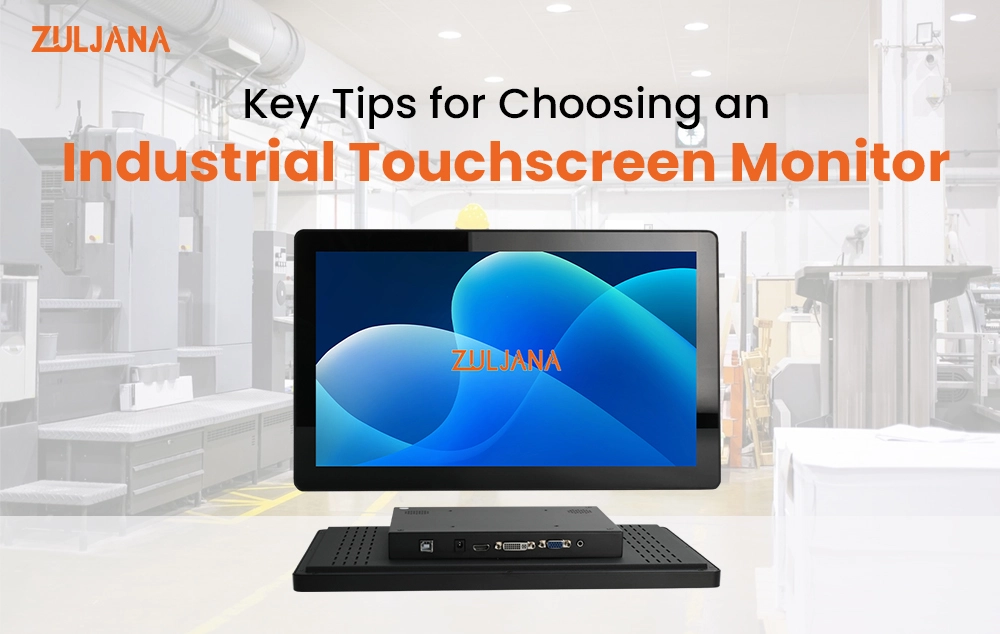
7. Response Time
- Response time is an important factor to consider when choosing an industrial touchscreen monitor. This is the speed at which the monitor reacts to your touch or input.
- After you touch or select something on the screen, the response time refers to how quickly the screen updates. A shorter response time means the monitor reacts almost instantly, which reduces any delay or lag.
- In short, a monitor with a wide viewing angle helps everyone see the screen clearly, no matter where they are positioned.
8. Operating Temperature Range
Now, let’s keep an eye on another interesting factor to consider when selecting the right industrial touchscreen monitor: An operating temperature range. This tells you the temperatures the monitor can handle while still working properly.
- Operating temperature range means the range of temperatures where the touchscreen monitor can function well without getting damaged or showing problems.
- For hot environments, like places with lots of machinery or direct sunlight, the industrial monitor should be able to operate in temperatures up to around 50°C (122°F).
- For cold environments, like refrigerated areas or places with chilly weather, the monitor should work well in temperatures down to about -20°C (-4°F).
- In addition, consider factors like the 4:3 monitor aspect ratio if your setup requires specific dimensions. For example, a 15 inch monitor might be ideal for certain applications, while a 24 inch touchscreen monitor or a 21.5 inch touch screen monitor could be better suited for others.
Remember, if you’re working in environments that use digital signage monitors or if you’re unsure how big a 22 inch monitor is, always check the specifications to ensure it meets your requirements.
9. Power Consumption
You should consider power consumption when choosing an industrial touchscreen monitor. This is about how much electricity the monitor uses while it’s turned on.
10. Mounting Options
Mounting options should be considered when purchasing an industrial touchscreen monitor. The monitor can be attached to your workspace in a variety of ways to make sure it looks good and works perfectly.
Mounting options refer to the different ways you can set up your monitor. Here are some common types:
- VESA Mounts: These are standard holes on the back of the monitor that let you attach it to various stands or wall mounts. They’re great for flexible setups, allowing you to adjust the monitor’s position easily.
- RAM Mounts: These are adjustable and can be attached to different surfaces, like desks or machinery. They let you move the monitor around to find the perfect angle.
- Panel Mounts These are used to secure the monitor directly into a panel or control board. They are often used in equipment or machines where the monitor needs to be built-in.
- Rack Mounts These let you install the monitor into a rack or cabinet. They’re useful in server rooms or control centers where monitors need to be mounted in a row.
- Custom Brackets Sometimes, you might need special brackets to fit your unique setup. Custom brackets are made to fit specific requirements, ensuring the monitor is securely attached in the right spot.
11. Maintenance and Support
It’s important to pay attention to maintenance and support when choosing an industrial monitor. Check what help and protection you get if the monitor breaks down.
Maintenance and support include two main things:
- Manufacturer’s Warranty: This is like a promise from the company that made the monitor. It covers repairs or replacements if the monitor has problems or stops working correctly within a certain time. Look for a warranty that lasts a good amount of time, like one year or more, to make sure you’re covered.
- Support Services: This is the help you can get from the manufacturer if you have questions or issues. Check if they offer customer support through phone, email, or live chat. Good support services mean you can get help quickly if you need it.
12. Ease of Use
Make sure the industrial touchscreen monitor you choose is easy to use. This means how easy and comfortable it is to operate the monitor and make changes to its settings.
Ease of use includes two main things:
- User-Friendly Interfaces: This is how simple and clear the monitor’s controls and menus are. A user-friendly interface makes it easy to navigate through different options and settings. It should be straightforward and not too complicated so you can quickly find what you need without getting frustrated.
- Adjustable Settings: These are features that let you change how the monitor works to suit your needs. For example, you might want to adjust the brightness or contrast or even change the touch sensitivity. Adjustable settings help you customize the monitor so it works best for your specific tasks and environment.
FAQs
Touchscreen monitors have a few disadvantages. They can be difficult to use if the screen gets dirty or smudged, making it hard to see clearly. Touchscreen monitors might also be more expensive than regular monitors.
The life of a touchscreen depends on the type it uses. For example, a capacitive touchscreen can last 5 to 10 years if you take care of it. On the other hand, a resistive touchscreen can work for over 200,000 or more touches.
A touchscreen monitor works by sensing when and where you touch the screen. It uses special technology to detect your finger or a stylus and then shows the action on the screen.
You should use your finger or a special stylus that is made of metal or rubber to control touchscreens since these materials conduct electricity well. The screen senses your touch with the help of these materials.
Conclusion
When choosing an industrial touchscreen monitor, remember these key factors to consider: screen resolution, touchscreen technology, and durability for tough environments. Also check the brightness and contrast, connectivity options, and viewing angle, response time for quick touch reactions, and ensure the monitor fits your operating temperature range and is energy-efficient.
Also, consider the mounting options for your setup, maintenance, and support for help if needed, and make sure the monitor has the right certifications for safety and quality. These key factors will help you pick the perfect monitor for your needs. With the right choice, the system is not only more efficient but also more reliable and long-lasting in demanding industrial environments.







